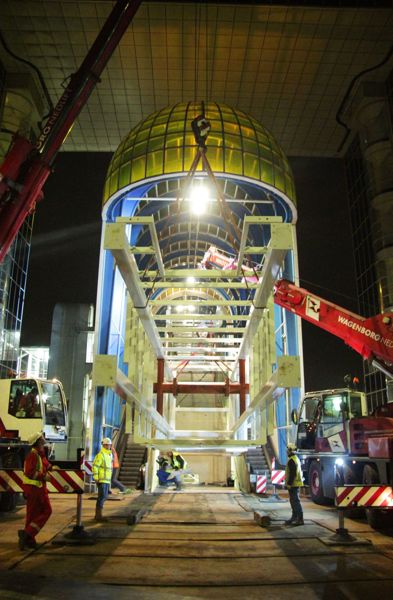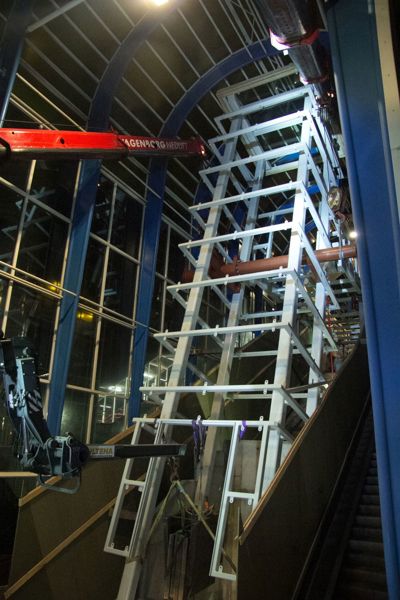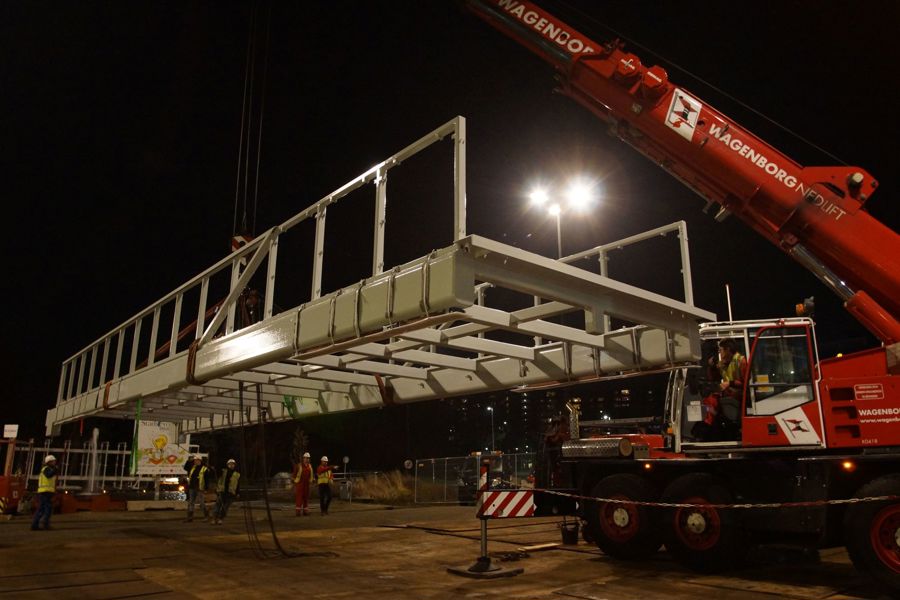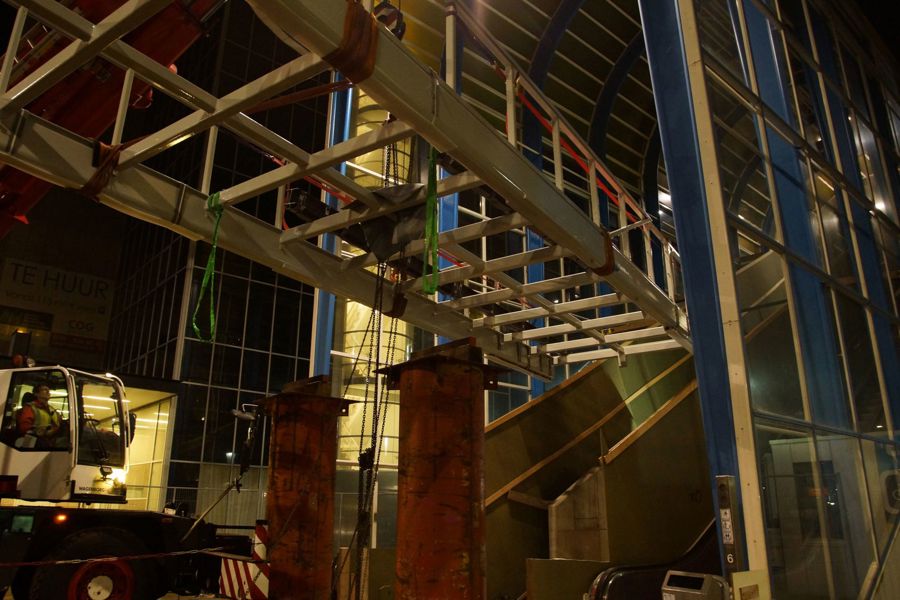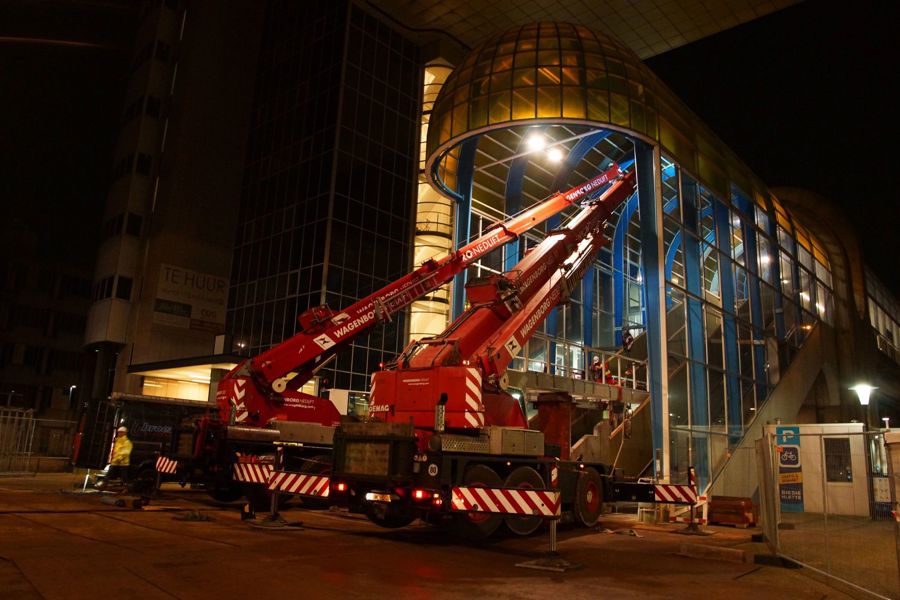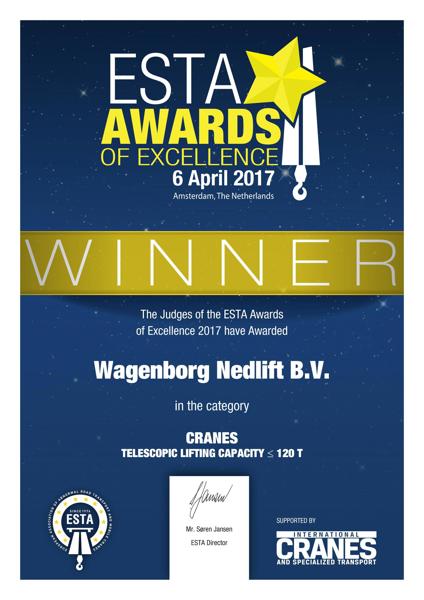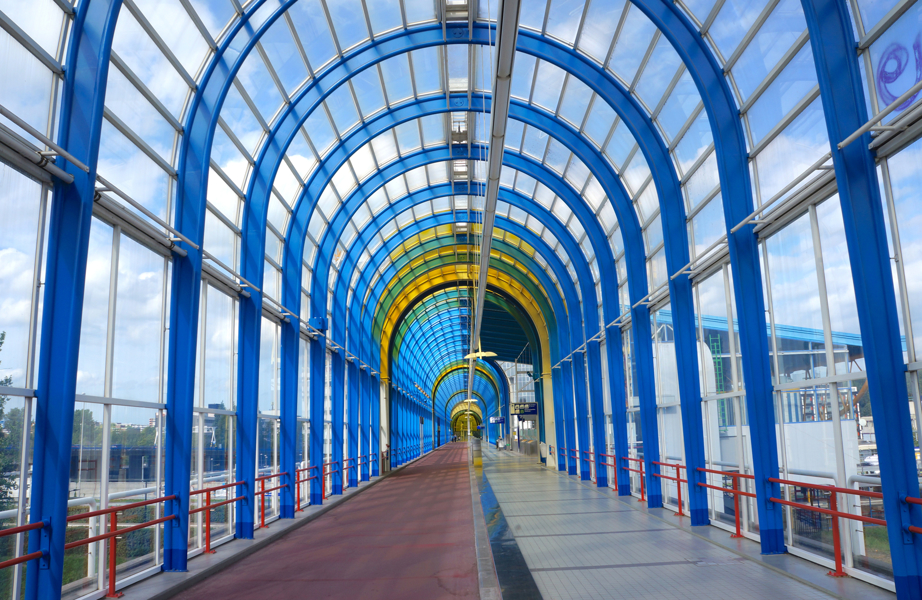
Hoisting in a tight space
Smart thinking
The available space in the entrance building of the bridge was very limited. A nice challenge for the Wagenborg Nedlift engineers to come up with a safe hoisting solution!


Strong together
First, the 10.5-tonne lift shaft was transported to the entrance. Using two AC-40 compact cranes, the shaft was manoeuvred into a vertical position. The next step consisted of positioning both AC-40 compact cranes next to each other and placing the lift construction in tandem lift in its prefab foundation.
That involved some inching and pinching down to the centimetre, while the crane operators had to carry out this hoisting 'blind', i.e. following the instructions of the hoisting supervisor only.
Teamwork
Once the lift construction had been placed, the new walkway could be hoisted against the shaft up to its final position, where the Wagenborg Nedlift team lowered the bridge using the compact cranes and jacking equipment.
Thanks to the great dedication and the excellent cooperation of all parties involved, this project was carried out successfully to the full satisfaction of the client.

Check here the pictures of this project!
Awarded with ESTA Award!
The tight and professional hoisting job at the Nelson Mandela Bridge earned an ESTA Award!
ESTA is the European trade association for the heavy transport, lifting and crane rental sector. ESTA represents the national trade associations in the sector. Every year ESTA Awards are presented for projects that stand out in the field of technical ingenuity, innovation or safety.

About the Nelson Mandela Bridge
The Nelson Mandela Bridge, the link between the Driemanspolder and Rokkeveen districts, was specially designed for the Floriade exhibition in 1992. High-profile designs and art forms were sought for the design of this highly prestigious horticultural exhibition.
Architect Johan Bak designed a 180-metre bridge with an all-glass canopy with blue and yellow panels for this horticultural exhibition. These colours are incorporated in the municipal coat of arms of Zoetermeer.
Nelson Mandela Brug Zoetermeer

